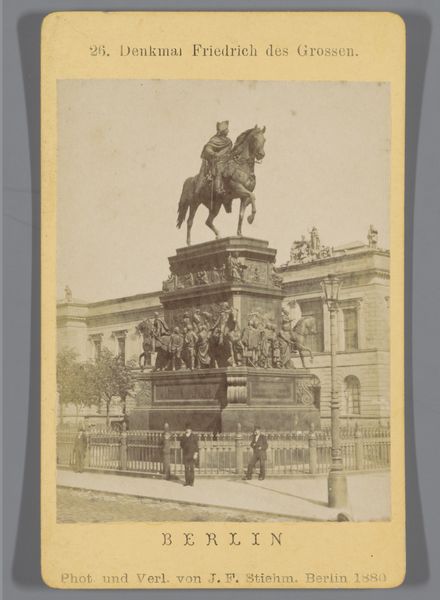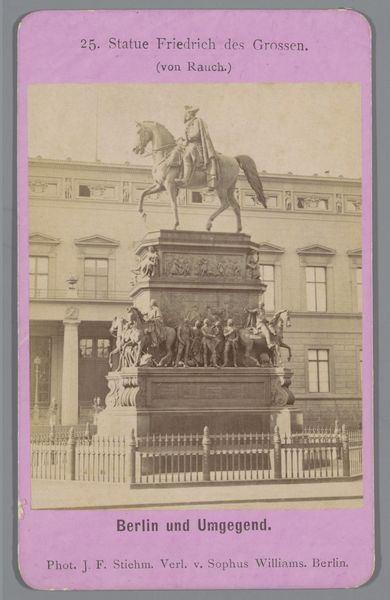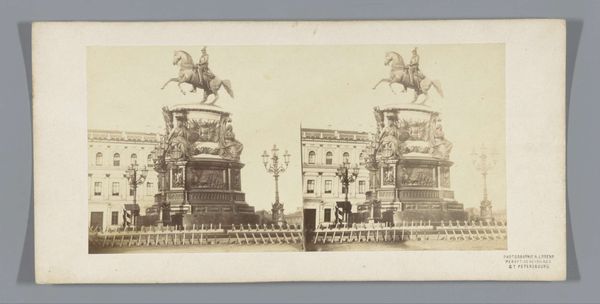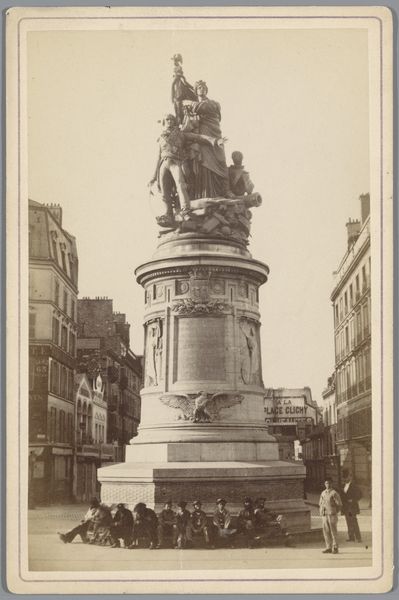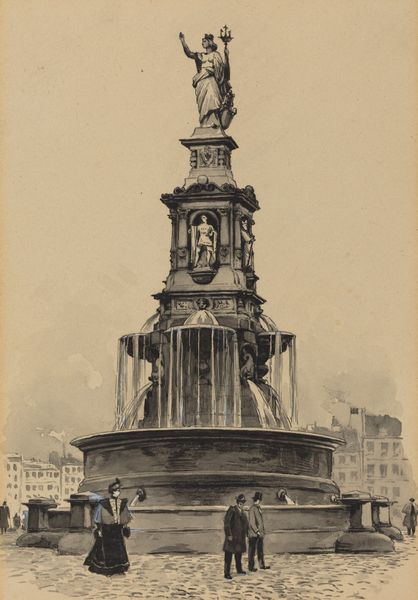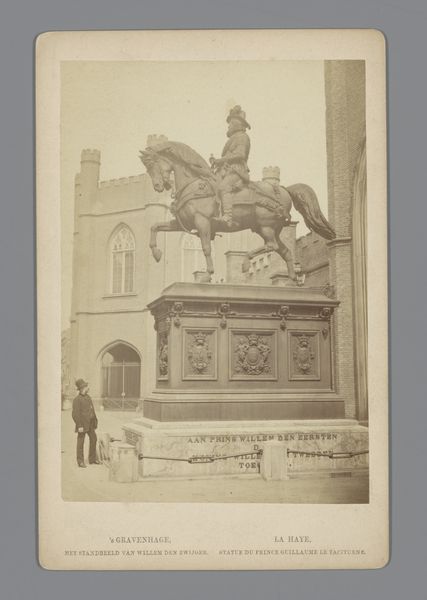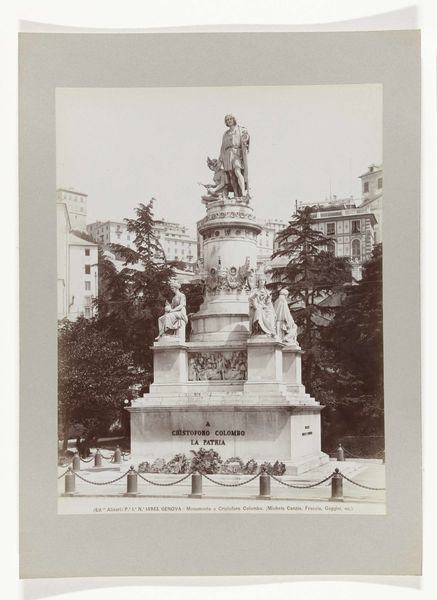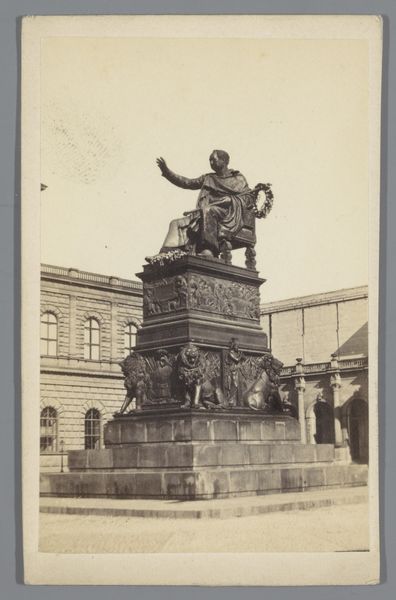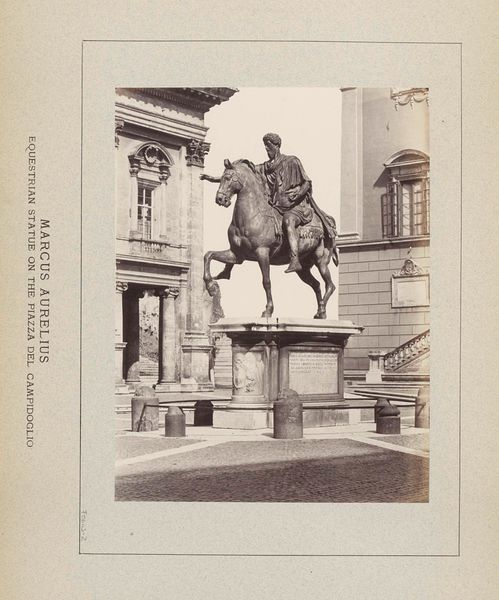
photography
#
portrait
#
photography
#
coloured pencil
#
ancient-mediterranean
#
cityscape
Dimensions: height 101 mm, width 60 mm
Copyright: Rijks Museum: Open Domain
Curator: This mounted photograph presents the "Equestrian Statue of Tsar Nicholas I in Saint Petersburg," captured sometime between 1880 and 1900. The photographer, Albert Felisch, was operating from Bolshaia Morskaia Street, number 42, in the city itself. Editor: There's a stillness about it, isn’t there? Even though it depicts movement with the rearing horse, the sepia tones and sharp focus create a sense of formality, almost an untouchable quality, reflecting imperial power but also a bygone era. Curator: That's quite perceptive. Imperial Russia at this time was deeply entrenched in systems of power, and representations of the Tsar were incredibly controlled and deliberate. Monuments like these served a distinct public function in cementing legitimacy and promoting the image of a powerful, divinely sanctioned ruler. Editor: And what does it mean, representing this leader through a permanent statue during this period of socio-political upheaval in Russia? Who was this artwork meant for, and what was its cultural impact then and now, especially for marginalized groups living in Saint Petersburg? Curator: Well, consider the context. Erecting statues, especially equestrian ones, traditionally links rulers to military prowess and authority, invoking Roman imperial imagery. Felisch’s photography likely helped disseminate this image to a wider audience, furthering its impact through printed reproductions in papers, books, and personal albums. Photography became another medium through which imperial power manifested. Editor: Yes, exactly! It feels staged, not just as a portrait, but a stage for propagating a specific vision. It highlights a sense of manufactured dominance overlooking potential discontent simmering beneath the surface of tsarist Russia. And, the absence of any sign of ordinary Russians—other than the lone figure in the bottom—heightens the feeling of disconnection between the imperial narrative and the life of people at the time. Curator: It really does emphasize the monumental. When analyzing it today, our understanding must also reflect upon its complicated legacy, considering questions about the imperial politics of display, then, and who it resonates with, and who it alienates, now. Editor: I agree entirely; these artworks operate at the intersections of social narratives and can promote much-needed discussions and new ways of contemplating difficult truths. It makes you ponder the very role these representations still play today.
Comments
No comments
Be the first to comment and join the conversation on the ultimate creative platform.

